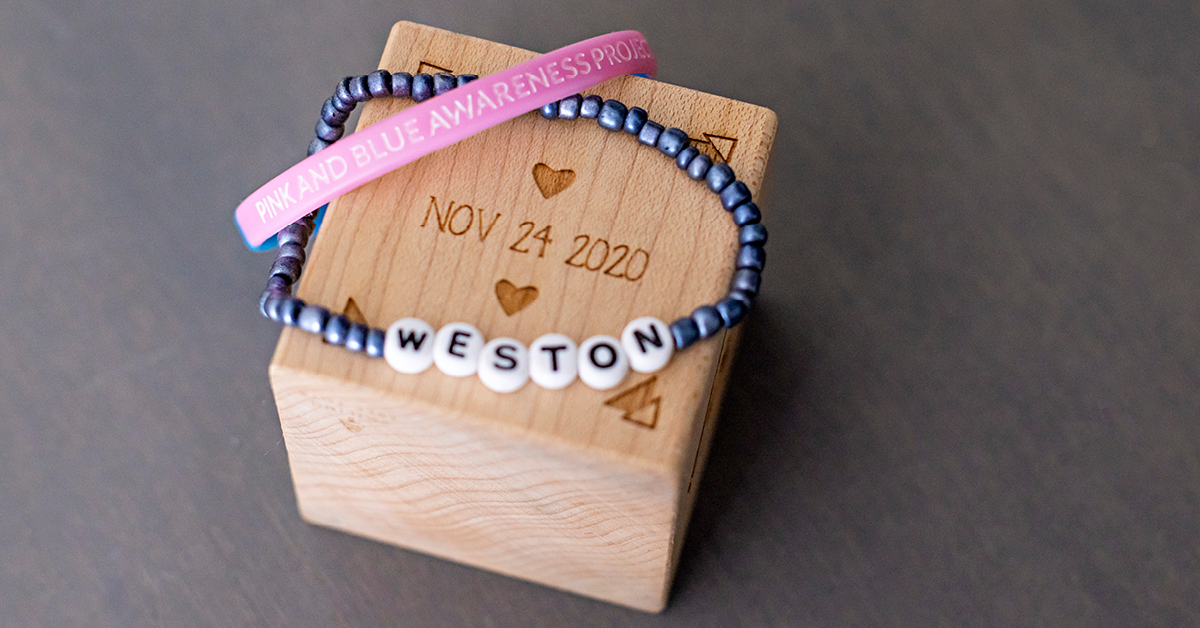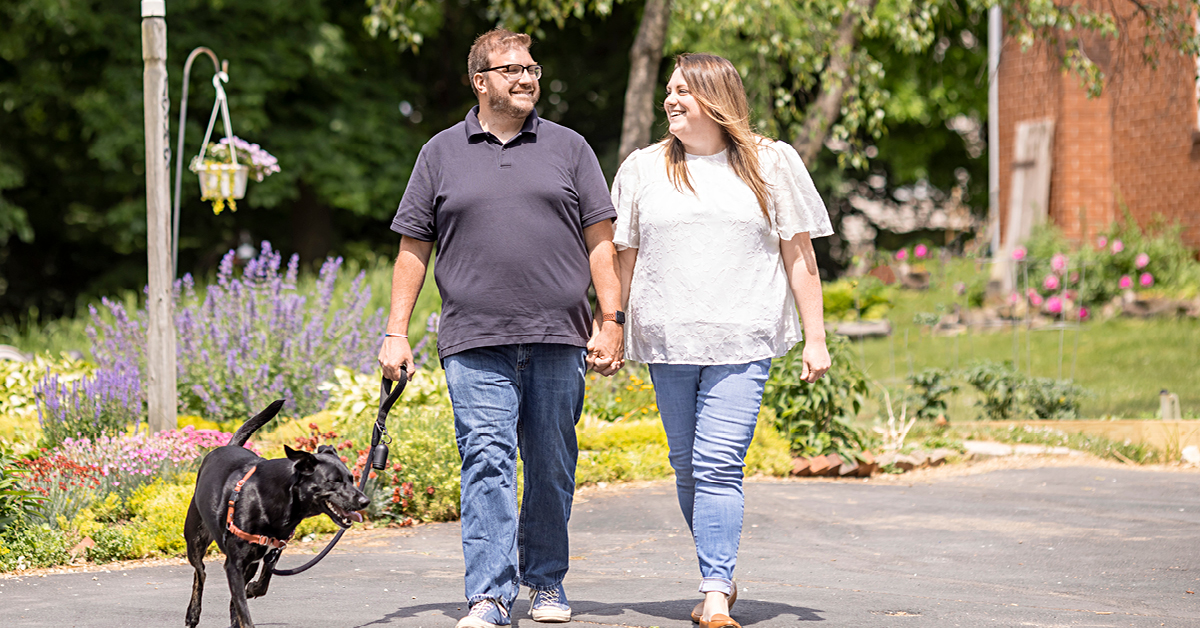Healing Maddie's Heart
*Sensitive content warning: pregnancy and loss*
Not every pregnancy has a happy ending. Unfortunately, this truth is one Madeline (Maddie) Weiant experienced firsthand after losing her son, Weston. Now, almost three years after going through this heartbreaking tragedy, Weiant has found purpose in the pain.
“Being open about what I went through helps open the conversation about pregnancy loss,” she says. “By sharing my story, maybe I can help another woman who finds herself in my shoes.”
Carrying complications
Weiant and her husband, Andrew, found out they were pregnant in July 2020. Almost immediately after, Weiant started experiencing health complications. “It started with high blood pressure and then progressed from there,” she says. “The moment I hit the second trimester, it was one thing after another. Things were happening to my body that never happened before.”
Weiant was diagnosed with preeclampsia.
“Preeclampsia is a serious and life-threatening condition women can develop after their 20th week of pregnancy or after giving birth, and is often characterized by dangerously high blood pressure,” says cardiologist Yasotha Rajeswaran, MD, with LVH Cardiology–1250 Cedar Crest and Lehigh Valley Heart and Vascular Institute. “In addition to causing high blood pressure, preeclampsia can cause multiple organs to not work normally. This includes the placenta, affecting the arteries carrying blood to the placenta. If the placenta doesn't get enough blood, the baby may receive inadequate blood and oxygen as well as fewer nutrients. This can lead to slow growth for the fetus, also known as fetal growth restriction, which often results in preterm birth.”
At their baby's 20th week scan, the Weiants were informed their baby was a little smaller than he should be, but at the time, there wasn't a need for concern. They were to return in a month.
Saying farewell far too soon
In November 2020, the Weiants went in for their baby's 24-week appointment. However, while the nurse was performing the growth scan and fetal echocardiogram, their excitement turned to worry. “I could sense something was off during the echocardiogram,” Weiant says. “Then when they brought a doctor in, we knew something was really wrong.”
The couple was informed that their baby had severe intrauterine growth restriction (IUGR) and fetal demise was imminent. Weiant returned for a checkup a few days later and it was confirmed – there was no heartbeat.
“I was very adamant about meeting my baby, but it did not go that way,” she says. Weiant was induced, but labor was not progressing. Due to her blood pressure rising, Weiant had to have a dilation and evacuation (D&E) procedure where she simultaneously had to say hello and goodbye to her son, Weston Joseph. The Weiants were left devastated.

Getting to the heart of the matter
Weiant received a postpartum cardiology referral with Dr. Rajeswaran. During her appointment, Dr. Rajeswaran ordered an echocardiogram, just to check in on her heart. Weiant says that decision “saved her life,” as the test revealed startling results regarding her ejection fraction.
“Ejection fraction is the amount of blood that your heart pumps each time it beats,” Dr. Rajeswaran says. “A healthy ejection fraction range is between 55% and 65%. Any ejection fraction below 55% would be abnormal and can represent heart failure. Maddie's was 37%.”
After a month of taking medicine and making small lifestyle changes, Weiant returned for a follow-up appointment with Dr. Rajeswaran. In just 30 days, her ejection fraction was up to 50% and continued improving from there. Today Weiant's ejection fraction is at 65%, back in the normal range.
“Dr. Rajeswaran saved my life,” Weiant says. “I have a medical background, and I never would have thought to have an echo done because I had no heart issues prior. But Dr. Rajeswaran did. She is so intelligent, compassionate and invested – she's truly the best.”

Following the follow-up
Despite Weiant's heart growing stronger by the day, it remained shattered over the loss of her son.
“I did not get myself together for a good year and a half after losing Weston,” she says. “I felt like I was just existing. I wasn't living. I was just going through the motions every day.”
However, she found the strength to pick herself up again – for her son. Right now, Weiant says “things are really good,” and she is seeing Dr. Rajeswaran every six months. On top of her ejection fracture returning to normal range, Weiant also has made major lifestyle changes. As a result, she has lost 70 pounds, which she believes has contributed to her heart and body functioning correctly again.
While Weiant misses Weston, she knows he's always close by.
“We see Weston in the sunrise and the sunset. It's a feeling you get – that's him,” she says. “Even though he's not here, his existence saved my life.”
Lehigh Valley Health Network | lvhn.org
This post is a sponsored collaboration between Lehigh Valley Health Network and Lehigh Valley Style.















